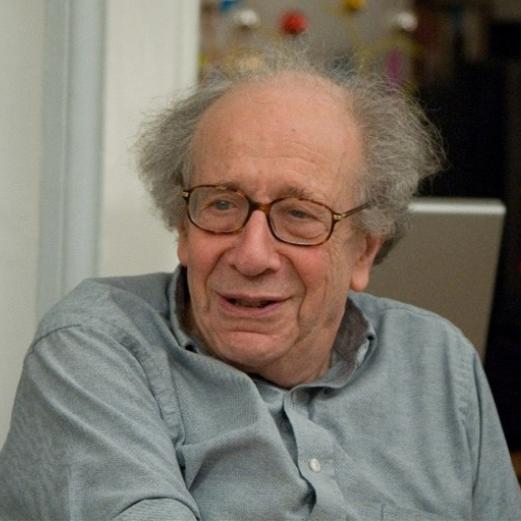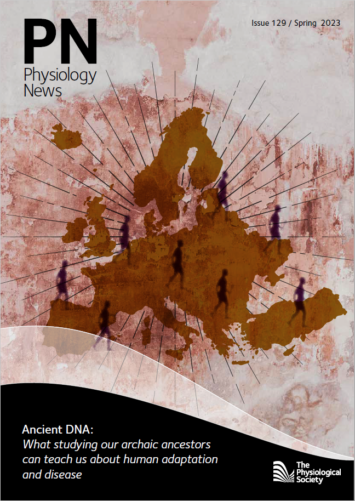
Physiology News Magazine
Obituary: Dr Philippe Ascher (1936-2022)
Membership
Obituary: Dr Philippe Ascher (1936-2022)
Membership
Written by Professor Alain Marty Saint Pères Paris Institute for the Neurosciences (SPPIN), Paris, France

The death of Philippe Ascher on 3 October 2022 leaves a gaping hole in the neuroscience community. Philippe Ascher’s father was a medical doctor who had emigrated to France from his native Hungary. Following his father’s example, Philippe was tempted by medicine, but eventually he opted for scientific research. He studied biology at Ecole Normale Supérieure (ENS) in Paris. He then began a PhD thesis under the guidance of Pierre Buser, performing electrophysiological recordings in cats, but soon felt frustrated by what he felt as a lack of access to cellular mechanisms in this type of research. He became interested in the research conducted at Institut Marey, then directed by Alfred Fessard, on the simpler nervous system of the sea mollusc Aplysia. There, he met his future wife, JacSue Kehoe, as well as his life-long friend Hersch (“Coco”) Gerschenfeld.
In May 1968, the entire teaching/research system in France was turned on its head. Philippe and his new friends clashed with some of the hierarchy at Institut Marey and for a while, Philippe’s prospects appeared rather gloomy. Fortunately, in 1970, the director of the ENS offered Philippe space in a new building to host research laboratories in biology. This unexpected opportunity gave Philippe a chance to make his dreams come true. Around the nucleus formed by Kehoe, Gerschenfeld and himself, he quickly gathered a series of talented young scientists. Together, they formed a unique structure of very small teams united by a spirit of solidarity and by friendly scientific discussions (often occurring in corridors). This laboratory became a beacon of cellular neuroscience.
Philippe’s academic models were Steve Kuffler’s Neurobiology Department in Harvard and the Biophysics Department at UCL. He liked the “do it yourself” style of British neuroscience at the time. He greatly admired Bernard Katz, and like Katz, failed to see the advantage of increasing his team beyond two or even three, even when he was overburdened with administrative duties.
In the 1970s, Philippe’s research focused on cholinergic synapses in Aplysia. He found that certain drugs such as tubocurarine, long considered as a pure receptor antagonist of acetylcholine receptors, acted by blocking the channel associated with the receptor. Together with Humphrey Rang, he extended this mechanism of action to describe several blockers of the mammalian autonomic nervous system.
In the 1980s, Philippe turned his attention to NMDA receptors (NMDARs). With Linda Nowak and others, he found that extracellular Mg2+ ions antagonise the action of glutamate on these receptors by a familiar mechanism: channel block. Mg2+ ions act at negative, but not at positive potentials, as the electric field drives the ions into their blocking site. They also found that NMDAR channels are highly permeant for Ca2+ ions. These findings attracted much attention as they contributed to understanding the unique role of NMDARs in certain forms of long-term potentiation (LTP). During LTP induction, a flux of Ca2+ ions through NMDAR channels results from the concerted activation of the presynaptic neuron (inducing glutamate release) and of the postsynaptic neuron (releasing Mg2+ block).
In equally important work from the same period, Jon Johnson and Philippe discovered that activation of NMDARs requires the binding of glycine in addition to that of glutamate. This unexpected finding originated in a seemingly trivial observation: an odd time course of the response of NMDARs obtained with a “U-tube” application (where the NMDA-containing solution was kept separate from the bath). This anomaly was eventually explained by the presence of a contaminant (glycine) in the bath solution, but not inside the U-tube.
In 2001, Philippe moved to University of Paris Saints Pères school of medicine as an emeritus professor. This allowed him to focus on his own research. Together with Mariano Casado and others at ENS, he uncovered an unexpected dependence of cerebellar long-term depression (LTD) on presynaptic NMDARs, mirroring the role of postsynaptic NMDARs in LTP. In more recent years, with Boris Lamotte d’Incamps, he studied mixed glutamatergic and cholinergic transmission at synapses made by motoneuron collaterals on Renshaw cells. Philippe was performing experiments up to the week preceding his death.
During his career, Philippe exerted a considerable influence on the organisation of research and biology teaching in France. The French university system lacks MD-PhD programmes but Philippe worked hard during the last two decades of his life to encourage MDs to obtain a basic science PhD. He obtained funds for two national programmes along these lines as well as teaching in them. His joy was to spend one or two full-time weeks with medical and pharmacy students as part of a crash course on basic science, often arguing long into the night. His effect was not only to spread his encyclopaedic knowledge of biology and of medicine, but also to engage many students and to guide them at the start of their professional careers.
Philippe Ascher was an idealist who had high aspirations for scientific research. He knew how to communicate his enthusiasm for research and how to convince young researchers that success does not necessitate many collaborators, a large budget, or ethical compromise. The entire neuroscience community will miss him greatly.
